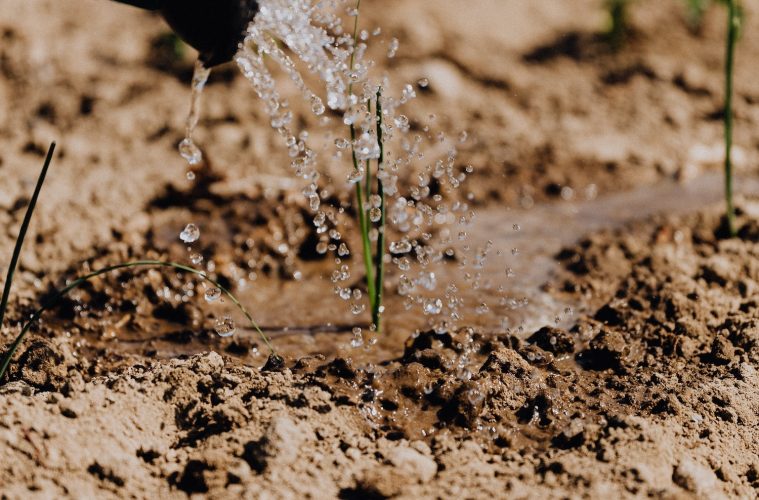Good soil is the foundation of most plants. It provides an anchor for the roots and access to the water and nutrients the plant needs to survive.
While some soil can be planted in without amendment, most soil needs some enrichment to grow plants efficiently. How you enrich the soil, and what you choose to plant in it, will depend on three things – the soil type, pH, and nutrition.
Type
Soil is made up of organic matter, microorganisms, and rock particles. The difference between soil types lies in the size of these particles. Large particles produce sandy soil, small particles clay soil, and silt is somewhere in between.
Any soil extreme is not good for plants. Fully clay soil is heavy, holds too much water, and leaves little space for air, suffocating the roots. Sandy soil holds too little water and nutrients and is easily washed away. Silt soil holds more water and compacts more easily but is not as dense as clay soil. The ideal garden soil is a balance of all three of these types and the gardening holy grail – loam. However, like most good things in life, this type of soil is rare, and you will likely deal with one of the more extreme types.
The easiest way to identify which type of soil you are dealing with is to get your hands dirty. If you feel large particles that fall through your hands easily, the soil is sandy. If you can form a clump that hardens and cracks when dried, the soil is clay. Good soil should crumble easily but not fall apart in your hands or clump together to form a hard ball.
Read more: How to improve the soil in your garden
pH
pH is a measure of acidity or alkalinity, using a scale of 0 to 14. 0 is completely acidic, 14 is completely alkaline, and 7 is neutral. Soils are almost never either of the extremes, usually falling somewhere between 5 and 9 on the scale.
Soil pH impacts nutritional density and how well the plant can absorb those nutrients, meaning the specific pH requirements will be different for each plant. On average, most plants prefer slightly acidic soil, somewhere between 6 and 7 on the scale, as this provides an optimal balance of all the nutrients a plant requires.
Unfortunately, you can’t tell the soil pH by looking at it or touching it. You will need a soil pH test kit, which is only necessary if you really can’t figure out why every plant you own is dying, or if you’re an advanced gardener with a penchant for chemistry experimentation.
Nutrients
Plants need a wide range of nutrients to survive and each serves a different purpose. However, you don’t need to know each nutrient and what it does specifically to garden effectively (there are too many to remember anyway). The most important soil nutrients to focus on are nitrogen (N), phosphorus (P) and potassium (K). You may have seen the letters N-P-K on bags at your local nursery – that’s what they stand for. These are considered the ‘Big Three’ primary nutrients for a plant’s survival.
Nitrogen is responsible for stem and leaf growth as well as the deep green colour of leafy vegetables. That’s why they say the colour of a vegetable is a clue to its nutritional content. Phosphorus is all about early development, root strength and flowering or fruiting. Potassium also helps strengthen a plant’s roots and aids in disease resistance. And a tip for vegetable gardeners – potassium can also improve flavour.
The value of the numbers on a bag of fertilizer refer to the concentration of these nutrients and their ratios, and always appear in the order N-P-K. For example, the 5-10-5 fertilizer mentioned before would be good for early planting or flowering plants as it has a high phosphorus content (10), with equal parts nitrogen and potassium (5).
Words: Madison Mouton
Image:Karolina Grabowska vir Pexels
Read more: DIY soil test

